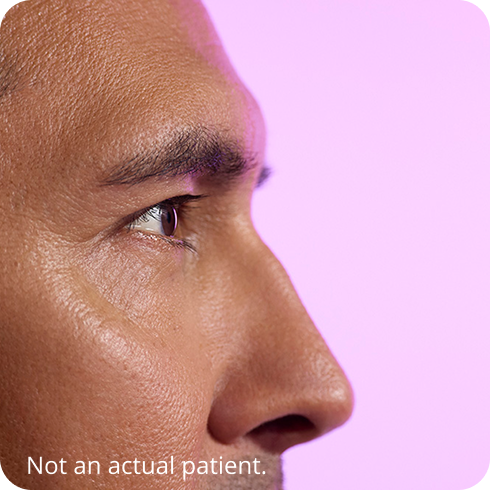The role of natural tear production in dry eye
What is tear deficiency?
Tear deficiency occurs when your eyes don't produce enough natural tears and can lead to dry eye symptoms, including:
• Eyes that feel irritated
• Fluctuating or blurry vision
• Watery eyes
• Redness
• Eye pain

Some dry eye treatments may take up to 6 months to provide relief. And while artificial tears may provide temporary relief, they do not increase natural tear production.
Why do natural tears matter?
In healthy eyes, natural tears are your first line of defense. They play an important role in keeping your eyes:


Comfortable
Natural tears help keep your eyes hydrated and free of debris

Healthy
They also help nourish the surface of the eye

Natural vs artificial tears. What's the difference?
Toggle to see the difference between natural and artificial tears
Ready to increase your natural tear production?
IMPORTANT SAFETY INFORMATION
- Use TRYPTYR exactly as your healthcare provider tells you to.
- TRYPTYR is for use in the eye. Each single-dose vial of TRYPTYR will give you enough medicine to treat both of your eyes. TRYPTYR vial is for 1-time use only. Use right away after opening and do not reuse.
What is TRYPTYR?
TRYPTYR (acoltremon ophthalmic solution) 0.003% is a prescription eye drop used for the treatment of the signs and symptoms of dry eye disease (DED).
• Keep the unopened single-dose vials in the original foil package until ready to use.
• Wash your hands before each use. Do not let the tip of the single-dose vial touch your eye or any other surface to avoid eye injury or infection.
• If you use TRYPTYR with other eye medicines, wait at least 5 minutes between using TRYPTYR and the other medicines.
• If you wear contact lenses, remove them before using TRYPTYR. Wait 15 minutes after dosing before putting contact lenses back in your eyes.
• Call your healthcare provider right away if you get an allergic reaction or other eye problems such as eye injury, eye infection, or eye pain.
• The most common side effect of TRYPTYR in clinical trials was burning or stinging sensation in the eye upon instillation, which was reported in 50% of patients.
For additional information about TRYPTYR, talk to your healthcare provider and click here to see the full Prescribing Information.
You are encouraged to report negative side effects of prescription drugs to the FDA. Visit www.fda.gov/medwatch or call 1-800-FDA-1088.


